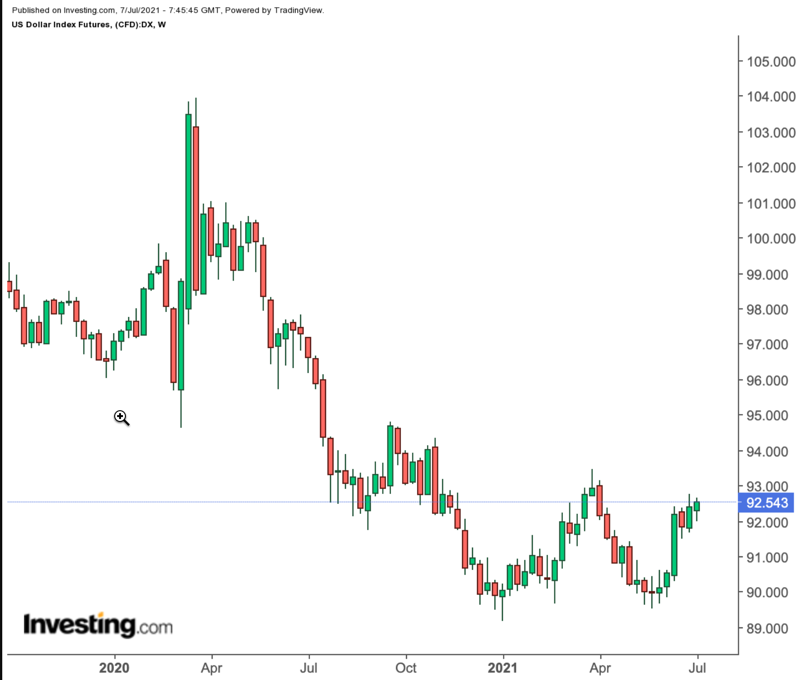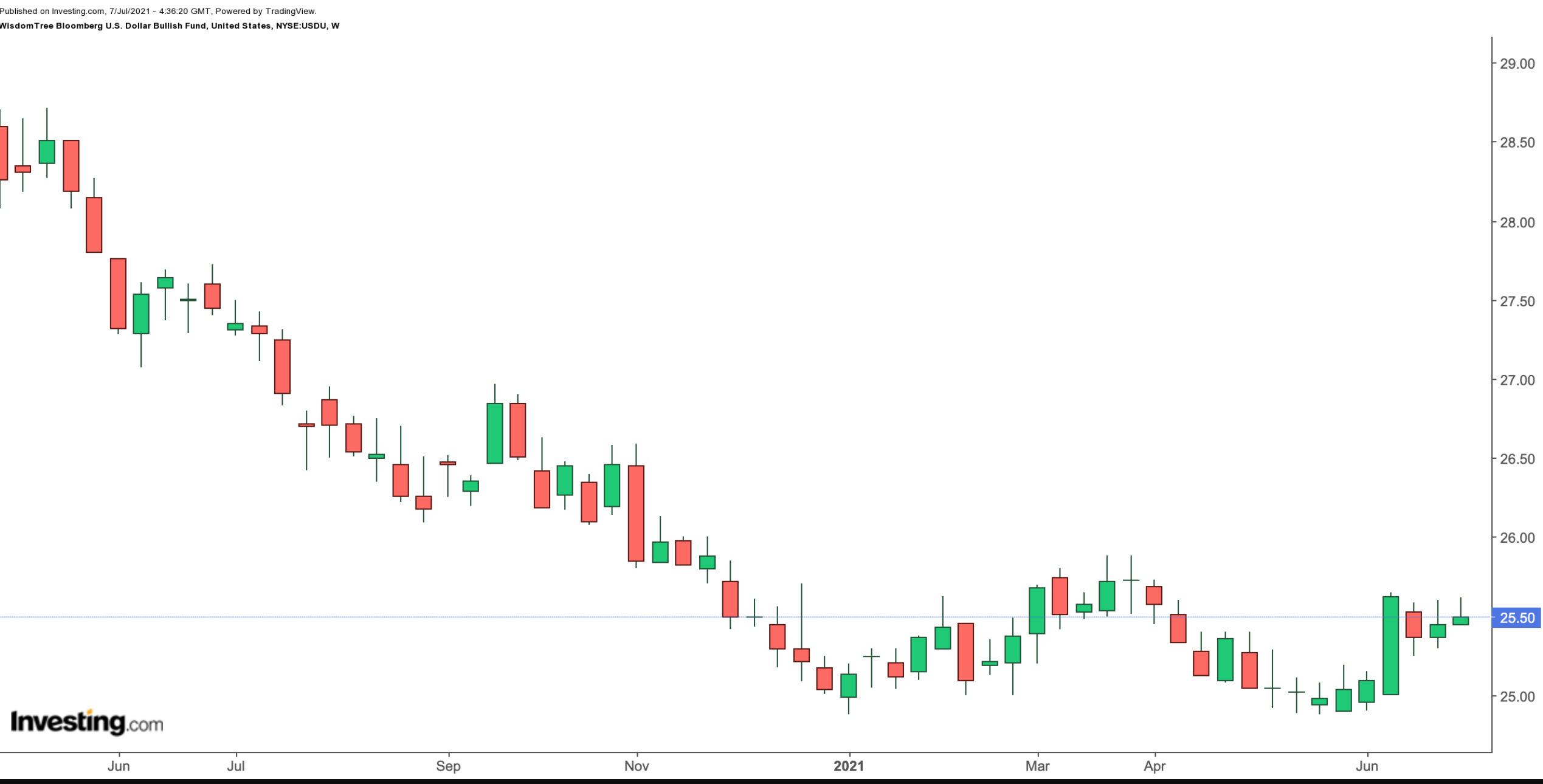Currency exchange-traded funds (CETFs) enable retail investors to participate in currency moves. These funds cover most major currencies as well as a number of currencies that are not always in the headlines.
There are both long and inverse (short) position ETFs, and more recently, leveraged (double and triple long and inverse) funds that use derivative products, which might be more appropriate for short-term trading.
In the past 12 months, the US Dollar Index Futures is down about 5%. The index is a widely-followed benchmark, which measures the value of the greenback relative to a basket of six currencies from the leading trading partners of the US.
Since the second half of June, the USDX has witnessed its best trading timeframe in well over a year. Tailwinds came from the Federal Reserve, which announced a hawkish sentiment towards future interest rate hikes. Analysts are debating whether potentially higher rates and tightening liquidity could mean a sharp rebound in the greenback. The index was shy of 90 in early June; now it is trading well over 92.
This means the dollar is beginning the second half of the year on firm footing. Those readers who pay attention to charts might want to know that short-term technical indicators are stretched. In fact, after the release of the US employment report on July 2, USD gave up some of the recent gains, while broader equity indices hit new records. However, long-term charts suggest that the long dollar rally is not necessarily over.
We previously covered the Invesco DB US Dollar Index Bullish Fund (NYSE:UUP) that could appeal to readers who believe the greenback will likely appreciate in the coming weeks. Year-to-date, UUP is up about 2.3%. However, like the USDX, it is down more than 5% in the past 52 weeks.
Today, we introduce another similar currency ETF for USD bulls.
WisdomTree Bloomberg US Dollar Bullish Fund
Current Price: $25.50
52-Week Range: $24.88 - $27.50
Dividend Yield: 0.68%
Expense Ratio: 0.51% per year
Our fund for today is the WisdomTree Bloomberg US Dollar Bullish Fund (NYSE:USDU). It provides exposure to the US dollar against a basket of foreign currencies from both developed and emerging markets.

USDU aims to exceed the returns of the Bloomberg Dollar Total Return Index, which benefits as the US dollar appreciates. The fund started trading in December 2013, and net assets stand at $112 million.
The currency ETF saw a 52-week high about a year ago, on July 7, 2020. Over the past 12 months, it is down 7.3%. So far this year, it returned 1.64%. Readers who are bullish on the greenback could consider investing in USDU around these levels.
Investors following major currencies might also want to analyze several other currency ETFs, especially ahead of big data releases by the Fed or other central banks. These funds include:
Invesco CurrencyShares® Japanese Yen Trust (NYSE:FXY) — down 7.3% YTD (covered here);
Invesco CurrencyShares® Euro Currency Trust (NYSE:FXE) — down 3.4% YTD;
Invesco CurrencyShares® British Pound Sterling Trust (NYSE:FXB) — up 0.99% YTD (covered here);
Invesco CurrencyShares® Canadian Dollar Trust (NYSE:FXC) — up 3.1% YTD;
Invesco CurrencyShares® Australian Dollar Trust (NYSE:FXA) — down 2.6% YTD;
WisdomTree Emerging Currency Strategy Fund (NYSE:CEW) — down 1.5% YTD.
We’re bullish on the US dollar in the coming months. However, not everyone might share this sentiment.
Thus, those readers who believe the up move in the greenback will be short-lived and that the dollar index will likely slide again, could consider buying an inverse currency ETF, like the Invesco DB US Dollar Index Bearish Fund (NYSE:UDN), which we previously covered. So far in 2021, UDN is down 3%, but is up more than 4% on the year.
